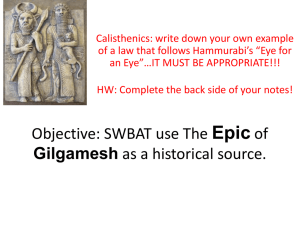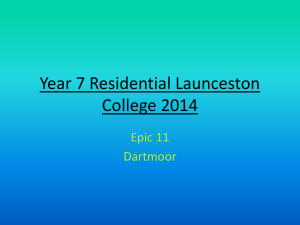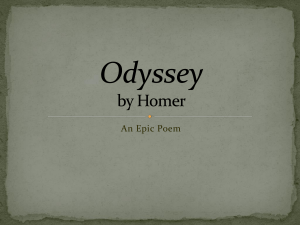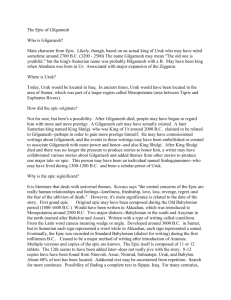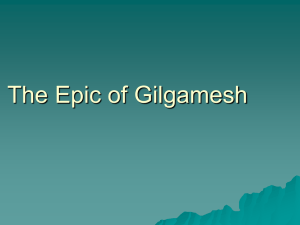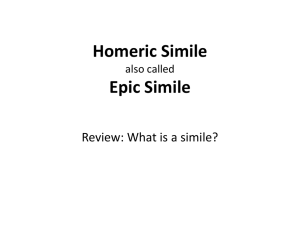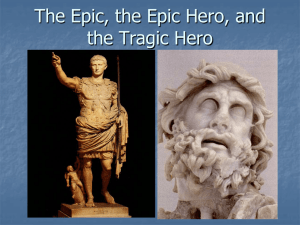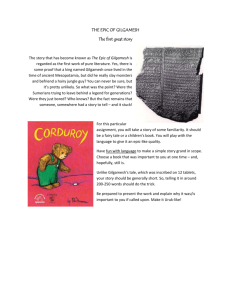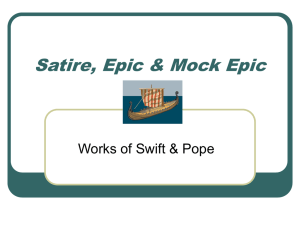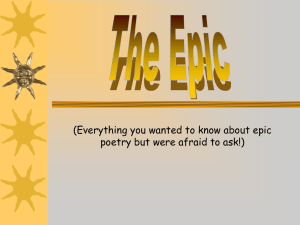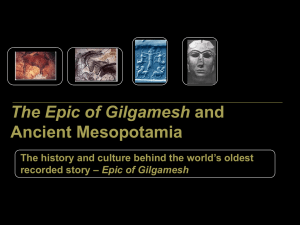Introductory Notes: Gilgamesh Background
advertisement
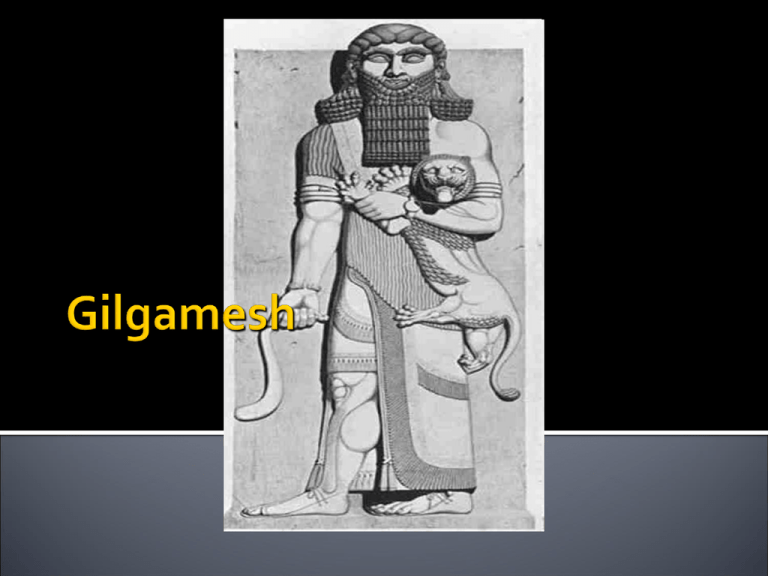
In the mid-1800s the first tablets on which Gilgamesh is written were discovered in the temple library and palace ruins in Nineveh, capital of the ancient Assyrian empire. One of the archeologists who made the discovery, Englishman George Smith, first delivered his partial translation of the tablets to a meeting of the Society of Biblical Archeology in 1872. The tablets in Nineveh date from 7th century B.C., but since their discovery older versions of the epic have been discovered. As a result, scholars have dated the epic at about 2000 B.C. It is assumed that the epic was not composed all at one time, but rather added to over time as it was handed down from one generation to the next. Gilgamesh was believed to be the fifth king of Uruk, a city in modern day Iraq Uruk is also believed to be the Biblical (Genesis 10:10) Erech, the second city founded by Nimrod. Gilgamesh is credited with building the famous walls of Uruk At its height in 2900 B.C., Uruk had a population of 50,000–80,000 residents living in 6 km² of walled area the largest city in the world at its time The epic poem from Ancient Mesopotamia is among the earliest known works of literary fiction The epic is noted for its central emphasis on the human experience and peripheral emphasis on the god. Unlike other epic heroes or tragic heroes, who suffer from only one fatal flaw, Gilgamesh is more like an antihero whose only heroic feat is his continuing his journey While Gilgamesh is part god and he is quite strong, his journey reveals his humanity and vulnerability An archetype is the original pattern or model of which all things of the same type are representations or copies, like a prototype or a perfect example. Literary “types”: the wise old man, the seductress, the hero, the evil adviser Gilgamesh might be considered the archetype of the literary quest The classical epic form was established by Homer in his Iliad and Odyssey. But Gilgamesh, written 1500 years before Homer, shares some of the some characteristics. Classical epic form includes the following characteristics: poetic lines that have regular meter and rhythm, and objective, formal, elevated, or even lofty style of language gods or godlike beings who intervene in the events action on a huge scale, often involving the fates of entire peoples A setting remote in time and place (remote can also be the future) Orality or the illusion of it. The poem is clearly narrated and consists of a story the narrator witnessed or heard about. A simple plot (good vs. evil) A central incident (or series of incidents) dealing with legendary or traditional material A theme involving universal human problems References to the world outside the poem – other stories of legend, history etc. giving the poem great scope and consequence. A towering hero of great stature (Achilles, Aeneas) Superhuman strength of body, character, or mind Stock epithets: a characterizing word or phrase accompanying or occurring in place of the name of a person or thing Homeric examples: wine-dark sea, rosy-fingered Dawn Shakespearean examples: Thou beslubbering swag-bellied ratsbane! Thou mad mustachio purple-hued maltworms! Modern examples: heartfelt thanks, stone-cold dead, backbreaking work, the green-eyed Seeker, racial epithets A trip to an underworld Lengthy descriptions of armor—especially the shield Invocation of a Muse Begins in medias res: in the middle of the hero’s story The use of epic similes: an epic simile is a long, detailed likeness or comparison developed in a lengthy passage. That which is described in an epic simile often interrupts the flow of the main plot. Epic similes are patterned after those appearing in Homer and often called Homeric similes. An excellent example of the epic simile appears in Virgil as he describes Dido’s intense love for Aeneas: (Book IV, lines 91-98) Unlucky Dido, burning, in her madness Roamed through all the city, like a doe Hit by an arrow shot from far away By a shepherd hunting in the Cretan woods— Hit by surprise, nor could the hunter see His flying steel had fixed itself in her; But though she runs for life through copse and glade The fatal shaft clings to her side. (italics show the epic simile) Gilgamesh does not include all of these things, but in the basic sense, it has the essence of a classical epic The Epic hero: Traditionally, the epic hero has the following characteristics male, high social status, fate affects the destiny of his people, supernatural events, long periods of time, long journeys, life-or-death struggles between good and evil, physical strength, skill, noble character, quick wit, rarely modest, embodies the ideals of his people, courage, endurance, loyalty, desires fame
